James Tasker was my cousin.
Well, sort of.
Technically, he was my second cousin, six times removed. Our common ancestor, William Tasker, was born in England around 1655. He was one of New Hampshire’s earliest settlers, arriving in Dover in 1675. The Taskers settled throughout the seacoast area.
James Frederick Tasker was born about a hundred miles west of the seacoast in Cornish on September 15, 1826, to James Tasker, Jr. (1785-1876) and Mary Huggins (1792-1843). His father was born and raised in Strafford, yet moved to Cornish, where he married Mary in 1814. The couple would have seven children, five of whom would live to adulthood. In federal census records, the elder James is indicated as illiterate and signed an 1828 deed using an “x” as his mark.
Tasker had dark hair, a long, full bushy beard, and heavy eyebrows. A man of “iron build” and weighing about two hundred pounds, Tasker could reportedly do the work of two to three ordinary men. Like his father, he is also frequently regarded as illiterate, but this may not be entirely accurate. Tasker did sign his name on several deeds, and the census records do not indicate he was illiterate. Regardless, his lack of formal education clearly did not hinder his success.
A young man named Cyrus H. Barton (1859-1955) worked as an apprentice for Tasker from the first day of December 1879 until Thanksgiving Day 1880. Barton shared his memories of Tasker in a letter to Richard Sanders Allen and also with reporter Edward J. Bennett of the Vermont Standard. Barton’s observations are quoted below.
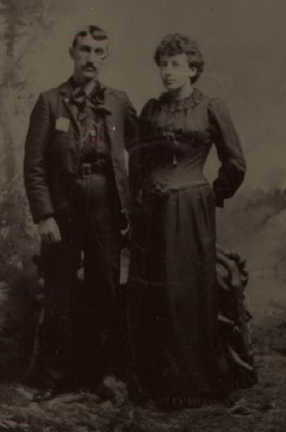
In 1853, Tasker married Elizabeth Mary “Lizzie” Kelley (1830-1864). The couple had had three children, Henry Harvey (1853-1894), Arthur Kelley (1857-1927), and Delia J. (1859-1931). Lizzie died at age thirty-four of consumption. Nine months later, Tasker married her younger sister, Adaline S. Kelley (1840-1914), and had two more children, Robert James (b. 1867) and Minnie E. (1869-1919).
Tasker’s property holdings grew from 3 ½ acres in 1853 to 242 acres in 1871. Tasker’s farm on Parsonage Road in Cornish “had a large farm, a large set of buildings. He built all but the main part of the house. He had a barn 110 ft. long, 40 ft. wide and 30 ft. from the eaves, and other buildings enough for a good sized village (in) the way of sheds, shops,” reported Barton. “He had 30 head of cattle, 300 sheep, 6 horses,” and planted corn, potatoes, and grain.
Tasker was employed with a variety of jobs. “His main business was building roads, stonework, moving buildings, and bridges,” reported Barton, who also stated, “Mr. Tasker never built any buildings.” Tasker had, however, built the buildings on his property, and rumor has it he built a barn on Page Road in Cornish.
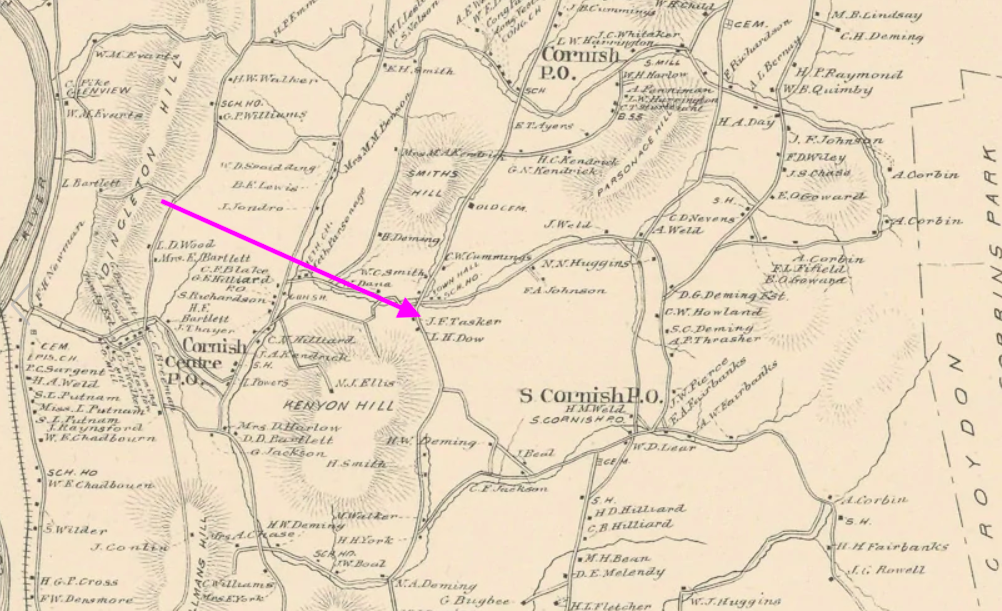
Tasker is, of course, known for his covered bridges. He is reputed for constructing a multiple kingpost truss model that he used with smaller bridges. The model was eight feet long, thirteen inches wide, thirteen inches high, and made of lightweight wood. Legend has it that while Tasker was showing his flimsy-looking model at a Claremont fair, some men laughed at him and said the model wouldn’t hold anything. Tasker brought the men into a local hardware store where he piled ten kegs of nails on top of his model, and then he put all two-hundred pounds of himself on top of the kegs. “They did not laugh anymore,” said Barton.
Tasker constructed sixteen covered bridges in both New Hampshire and Vermont, of which nine remain.
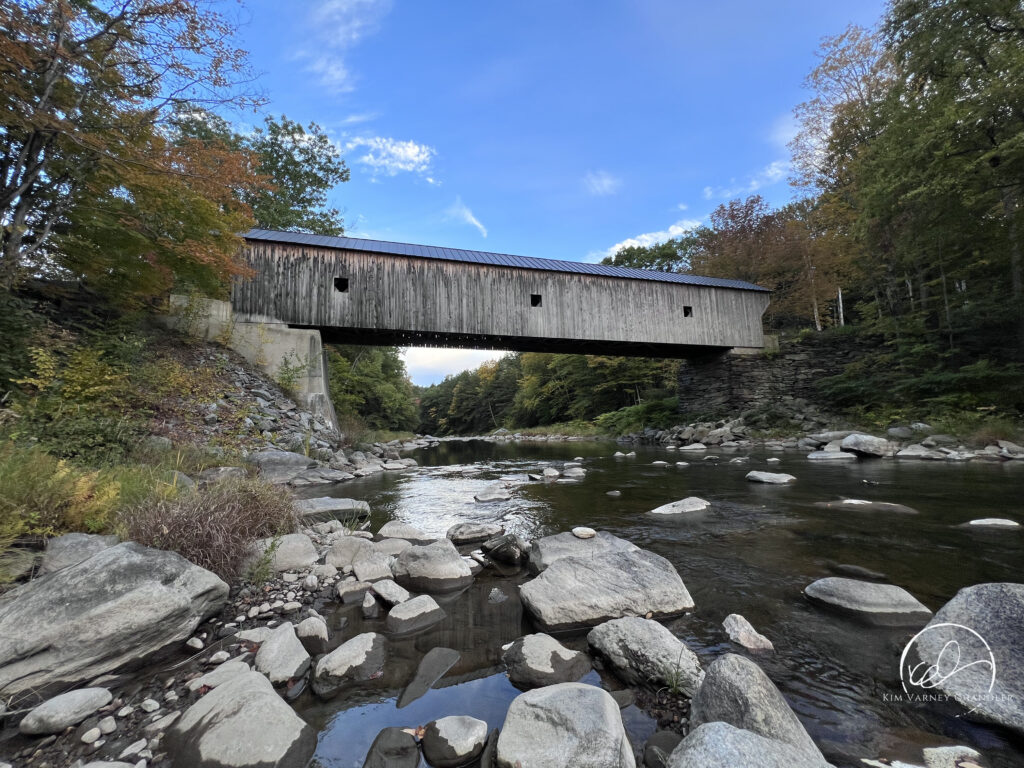

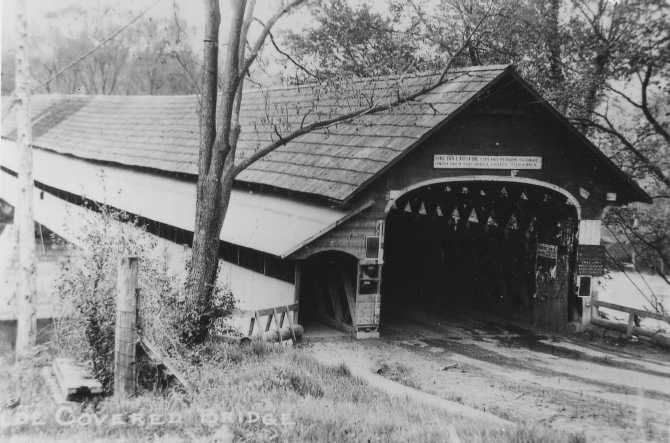
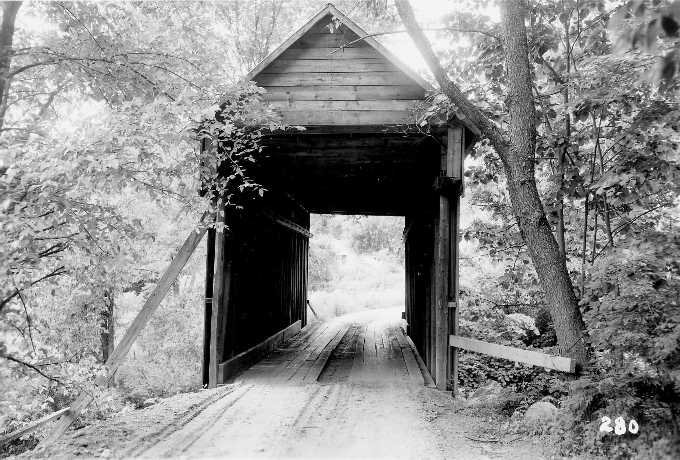
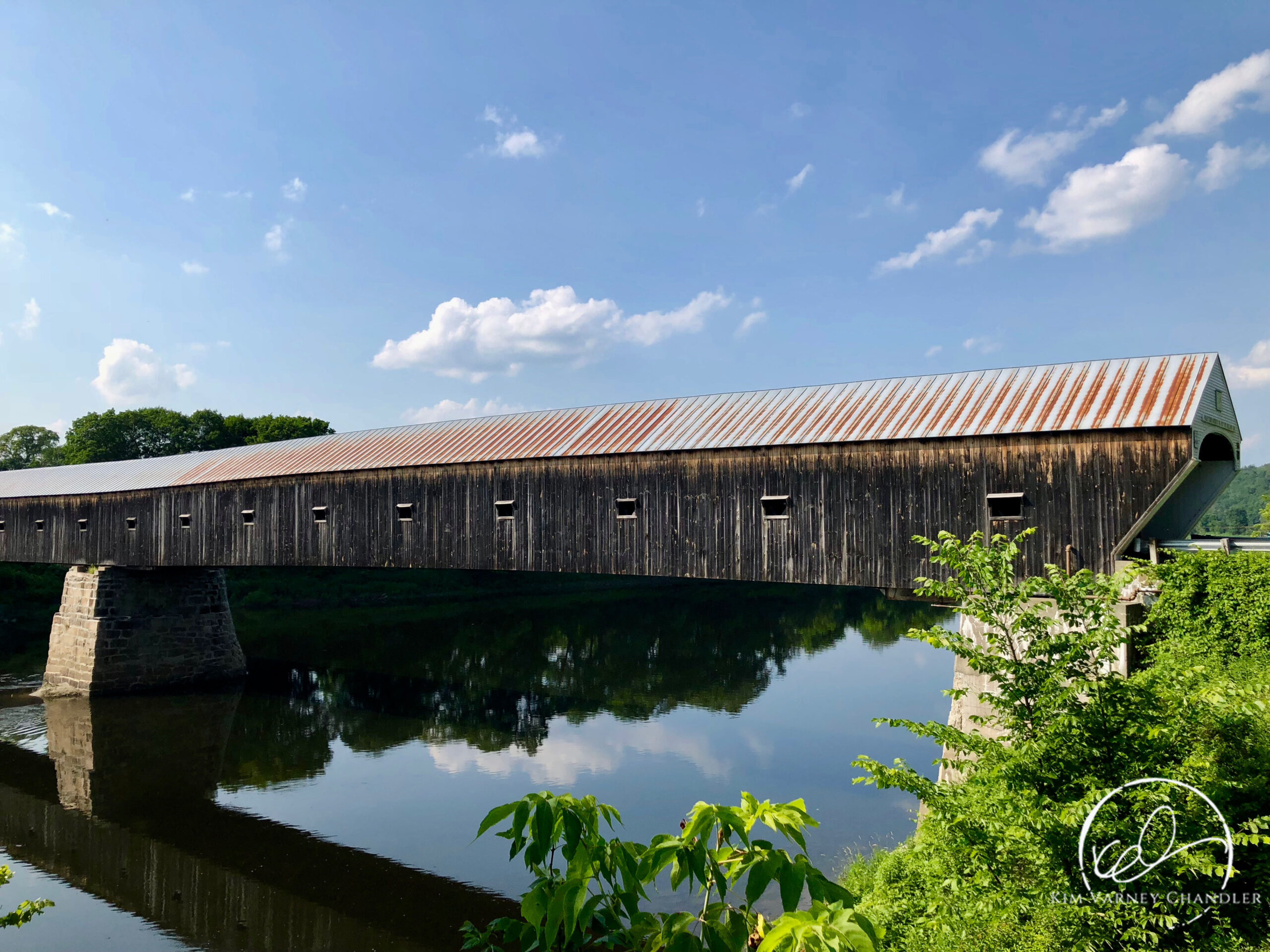

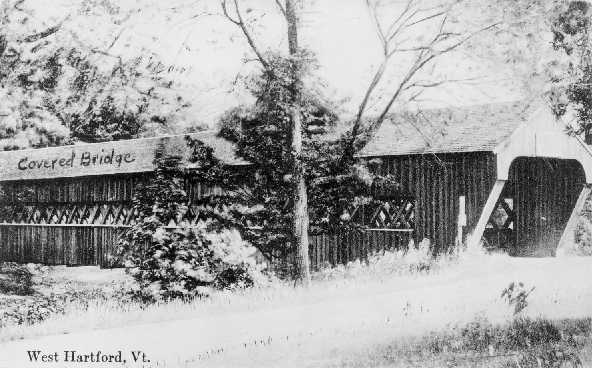
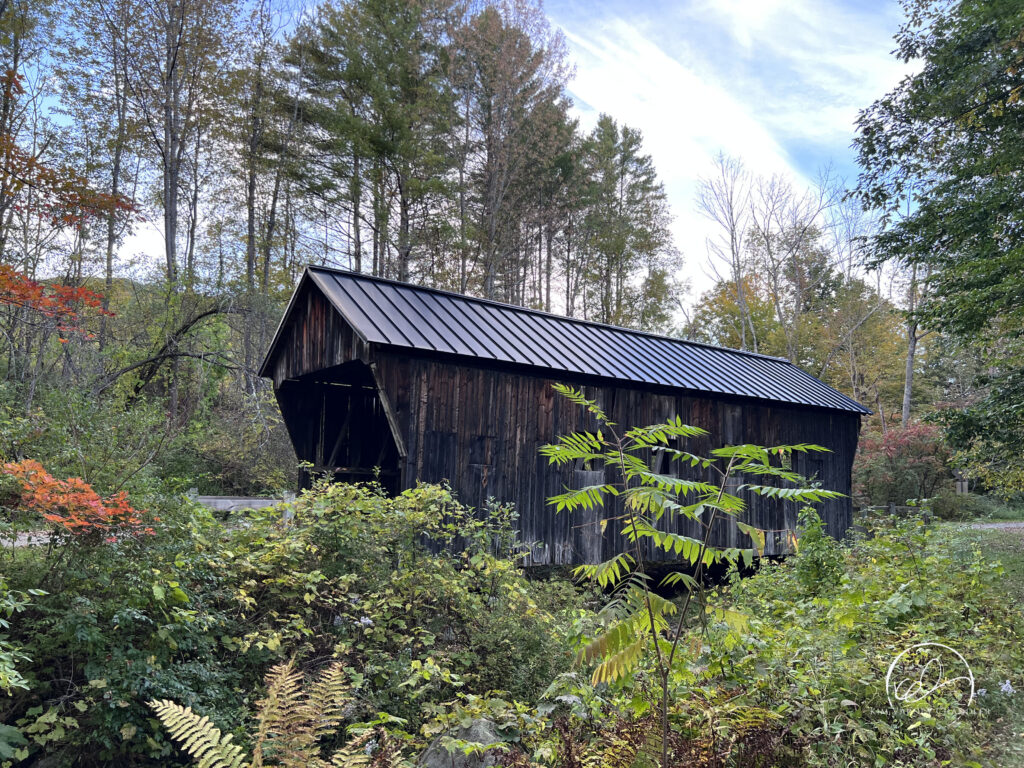

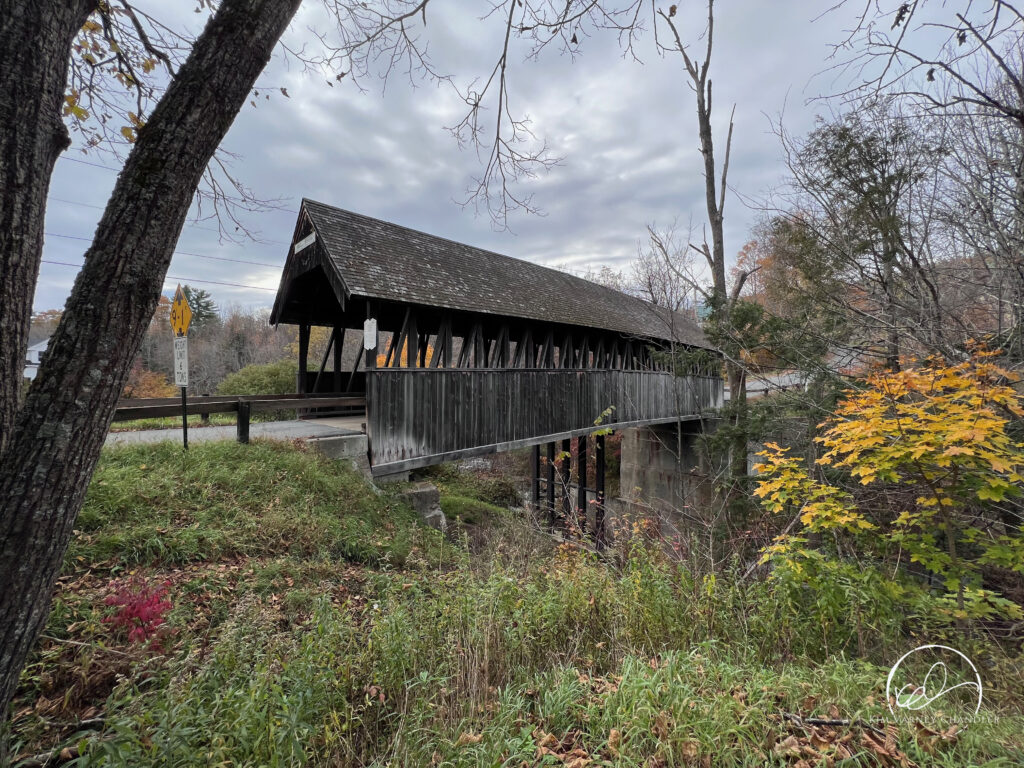
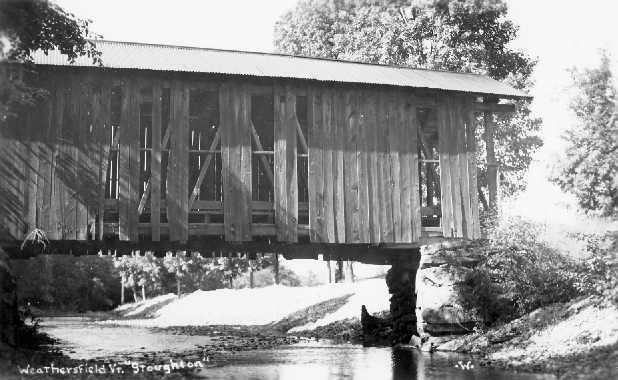
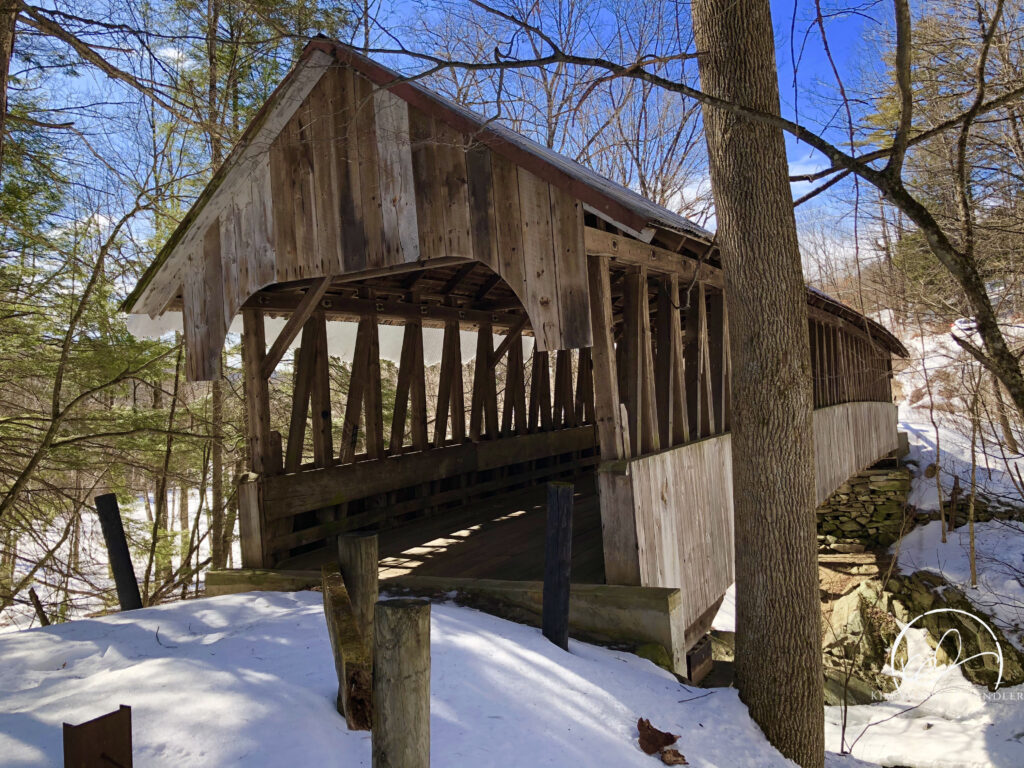
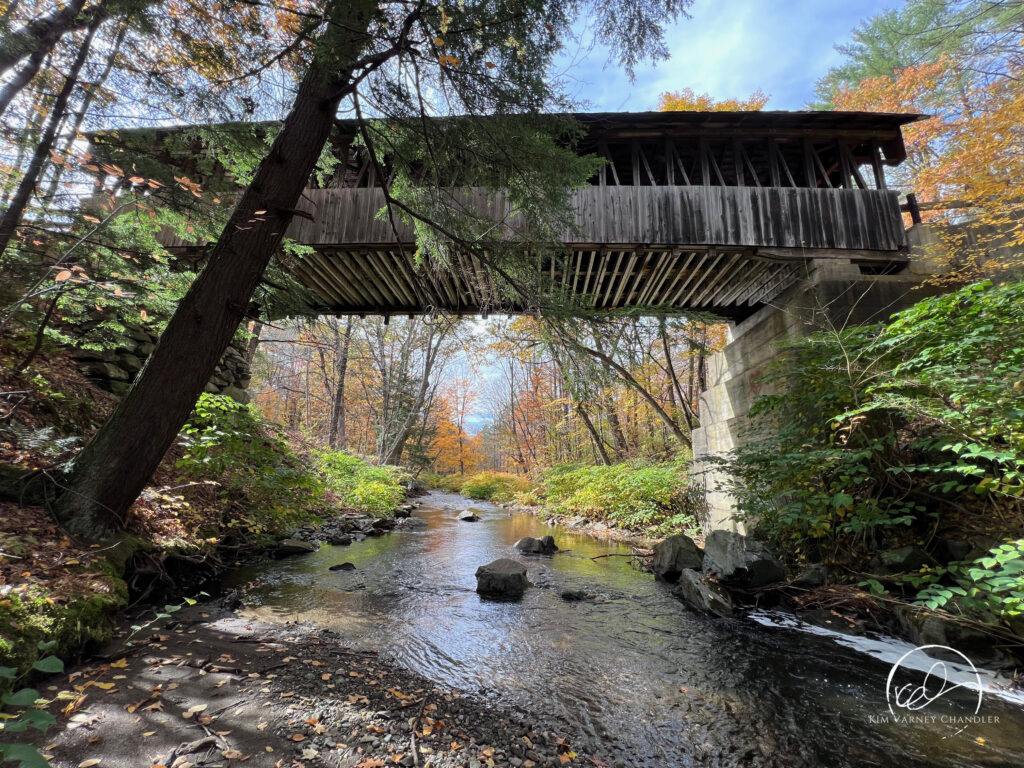


1851. Upper Falls/Downer’s Bridge. Weathersfield, Vermont.
1853. Bridge Street/Village Bridge. Royalton, Vermont. Lost in the 1927 flood.
1856. Fairlee-Orford Bridge. Fairlee, VT/Orford, NH. Built with Bela Fletcher. Lost in the 1936 flood.
1860. Ascutney Mill Brook Bridge. Weathersfield, Vermont. Lost in 1967.
1866. Cornish-Windsor Bridge. Cornish, NH/Windsor, VT. Built with Bela Fletcher.
1866. Fox/Foxville Bridge. Royalton, Vermont. Lost in the 1927 flood.
1867. White River Junction Bridge. Hartford, Vermont. Lost in a 1913 flood.
1867. West Hartford Bridge. Hartford, Vermont. Lost in the 1927 flood.
1875. Salmond Bridge. Weathersfield, Vermont. Moved in both 1959 and 1986.
1877. Blow-Me-Down Bridge. Cornish.
1880. Meriden/Mill Bridge. Plainfield.
1880. Stoughton/Titcomb Bridge. Weathersfield, Vermont. Built with son Henry. Moved in 1959.
1881. Blacksmith Shop Bridge. Cornish.
1881 or 1883. Martin’s Mill/Martinsville Bridge. Hartland, Vermont.
1882. Dingleton Hill Bridge. Cornish.
1883. West Campton Bridge. Campton. Lost in the 1927 flood.
About the Dingleton Hill Bridge, the New Hampshire Argus and Spectator reported, “James Tasker is getting out lumber for the Dingleton bridge from Croydon Mountain. L. Benway hauled with one pair of oxen, from Spruce Ball, a log 41 feet long, measuring 1930 feet …. James is the man to build bridges for they stay where he puts them” (Argus and Spectator, 1882).
In New Hampshire, Tasker also “built an open bridge. There were four of them over Mill Brook. They are all gone now, replaced with steel or cement. The sides were some six feet high,” said Barton. Town reports show Tasker was paid to build the Mercer, Brace, Wing, and Davis bridges.
Between 1851 and 1894, the town of Cornish paid Tasker for a variety of other jobs, including the extension of the Hearse House. The town of Cornish had purchased a new hearse, which, as it turns out, was too long to fit in the existing hearse house. Tasker’s bid, considered abnormally low for the project, was accepted. “But Jim, he looked the job over up there and bid $100 which was plenty below all the others. Well certain, all folks thought Jim had cracked, but let me tell you how he made $100 in less than half a day. He just went up to the cemetery and sawed that old hearse house right in half, pulled the two halves apart, and clapboarded in between,” said Barton.
Barton also recounted the time a “summa fella” wanted a new water line and had received many bids to dig up the old pipe and replace it with a new one. “Jim he calc’lated on that and said he’d take the job for $10 less than any lowest bidder. Now Jim, he never laid that new line; he hooked his team to one end of the old line, tied the new pipe on the opposite and drawed the old one out and the new one in! It took him 20 minutes,” said Barton.
“I don’t think there ever was a job too large or complicated that he couldn’t do. I don’t think there was ever a man in his line of business who could out fox him,” said Barton.
It seems Tasker was outfoxed several times when it came to his finances.
In March 1866, Tasker’s house caught on fire, and nearly all his furniture was destroyed. The damage totaled some $1,800, and Tasker did not have insurance. Tasker listed his farm and sawmill for sale in the Vermont Chronicle that fall. “The farm consists of about 30 acres of good land suitably divided into mowing, tillage, pasturing and woodland. There are on the place a house, barn, and other necessary out buildings, and water running to the house and barn” (Vermont Chronicle 1867).
In 1873, Tasker was sued by Elbridge Matthewson of Claremont to recover $25 from a horse trade. The jury returned a verdict for the plaintiff for $27.12. He was sued the following year by Allen Donohue, who was awarded $15 plus costs. In 1877, he was sued by Mary A. Foss for $28.89 and lost.
Tasker’s sawmill burned in October 1875, resulting in an estimated $6,000 worth of damage. Tasker was insured for $3,000. In 1879, Tasker sued the Trenton Insurance Company to recover the loss from fire damage to his mill. The jury sided with Tasker and awarded the damages he asked for; the amount is not recorded.
While “putting up some buildings for J. B. Farnsworth” in Chester, Vermont, on Friday, May 20, 1881, Tasker was arrested for debt. When the responding officer attempted to take Tasker into custody, his workers obstructed the officer and came at him with iron bars. The following Monday, three of the workers were arrested.
In 1884, an article reported Tasker “has the noblest piece of horse-flesh in the town of Cornish. He is five years old, stands 16 ½ hands high, and weighs 1300 lbs” (Argus and Spectator 1884).
In 1887, Tasker was hired to oversee the building of the dam for the Sugar River Pulp Mill Company in Croydon Flat. “It is said that he is a man that understands the business, and the dam will be pushed along, and what naps are taken and stories told during working hours will be as short as the name of the structure on which they are working” (Argus and Spectator 1887). That same year, he raised a flagpole in Cornish.
In February 1888, Tasker was thrown from his carriage when his horse “suddenly started after being watered at Dannatt’s, throwing his owner out, the sleigh running up and over the trough. From there the horse made rapid speed for home, striking and overturning D.N. Morgan, and when near Geo. Hilliard’s ran into an empty sled and was secured without doing serious damage, other than breaking the sleigh to some extent” (Vermont Journal 1888). It appears Tasker and the horse were unharmed.
That same year, the town of Newport held a special town meeting to discuss a bridge near the residences of L.F. Dodge and C.W. Barton. Tasker presented his bridge model to the townspeople and proposed a covered bridge at this location for $600. In the end, voters chose to construct an iron bridge for more than twice that amount. Tasker took his model and went home. In December, he laid his horse, Jim, to rest.
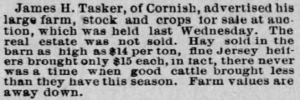
In 1892, Tasker once again advertised his farm for sale. The property did not sell.
1894 wasn’t a good year for Tasker. On April 7, Adaline divorced him after thirty years of marriage, citing extreme cruelty. The following day, his forty-year-old son Henry died of pneumonia. On July 23, the sixty-eight-year-old Tasker “had an experience at the depot… that he will not care to repeat at an early day. He attempted to cross the track to the station just in front of the incoming express from the south, and was caught by the pilot of the engine. With rare presence of mind he seized the flag-staff, to which he clung until the train stopped. He thus escaped being drawn under the engine and crushed. Beyond a severe cut on one arm, and bruises on his body, he was not otherwise injured and promises to be as well as ever in a few days” (Vermont Journal 1894).
Later that year, Tasker bought the livery and stage business formerly owned by Ira Heywood. Two years later, at age 70, Tasker finally sold his farm. “He had an auction, sold his farm tools. He did not sell his moving tools nor his bridge tools. He kept his driving horse. He lived with Charis folks for a while. He then moved his things up to Moulton’s where he lived for three or four years,” said Barton.
In July 1903, Tasker drove his team of horses up to Claremont for a Fourth of July parade. His horse, Pepper, became startled by either boys with firecrackers or a new “horseless carriage.” As he had been nine years earlier, Tasker was thrown from his carriage. Only this time, Tasker “struck the concrete walk on his head and shoulders and was rendered insensible.” He died from his injuries on July 18, 1903, at age 76. A funeral was held at the home of his son, Arthur, and Tasker’s remains were buried in the Comings Cemetery in Cornish.
Following his death, Tasker’s tools were sold off at auction to pay his expenses. Barton recalls that Henry Steele Wardner (1867-1935), one of the shareholders of the Cornish-Windsor Bridge, “wanted to know what had become of the model.” Cornish resident Perry Burr (1872-1958) had purchased the model for fifty cents at the auction. Wardner bought the model from Burr for $10. Where the model is now is anyone’s guess.
“Mr. Tasker was a very useful man for a man that could neither write, read nor figure or sign his name without a copey (sic),” said Barton, “I think he did mighty well.”
I think my cousin did mighty well indeed.

References
Historical photos used with permission from Covered Spans of Yesteryear and the National Society for the Preservation of Covered Bridges.
Barton, Cyrus H. 1948. “Letter to Cornish Historical Society.” July 18.
Bennett, Edward J. 1980. “The Bridge Builder.” Vermont Standard. July 1980.
New Hampshire Argus and Spectator. February 14, 1873.
_____. 1879. Supreme Court. New Hampshire Argus and Spectator, September 12, 1879.
_____. 1882. Cornish Flat. New Hampshire Argus and Spectator, December 29, 1882.
_____. 1884. Plainfield. New Hampshire Argus and Spectator, May 23, 1884.
_____. 1887. Croydon Flat. New Hampshire Argus and Spectator, June 10, 1887.
_____. 1888. Special Town Meeting. New Hampshire Argus and Spectator, June 22, 1888.
_____. 1888. Cornish Center. New Hampshire Argus and Spectator, December 21, 1888.
Woodstock Spirit of the Age, 1877. Woodstock Spirit of the Age, December 19, 1877.
Vermont Argus and Patriot. 1874. Argus and Patriot, January 1, 1874.
Vermont Chronicle. 1867. Vermont Chronicle, June 29, 1867.
Vermont Journal. 1903. Vermont Journal, July 18, 1903.
___. 1888. Vermont Journal, February 18, 1888.
Youden, Pat. 1982. “Cornish’s James Tasker ‘a man of iron build.” West Lebanon Valley News, February 3, 1982.

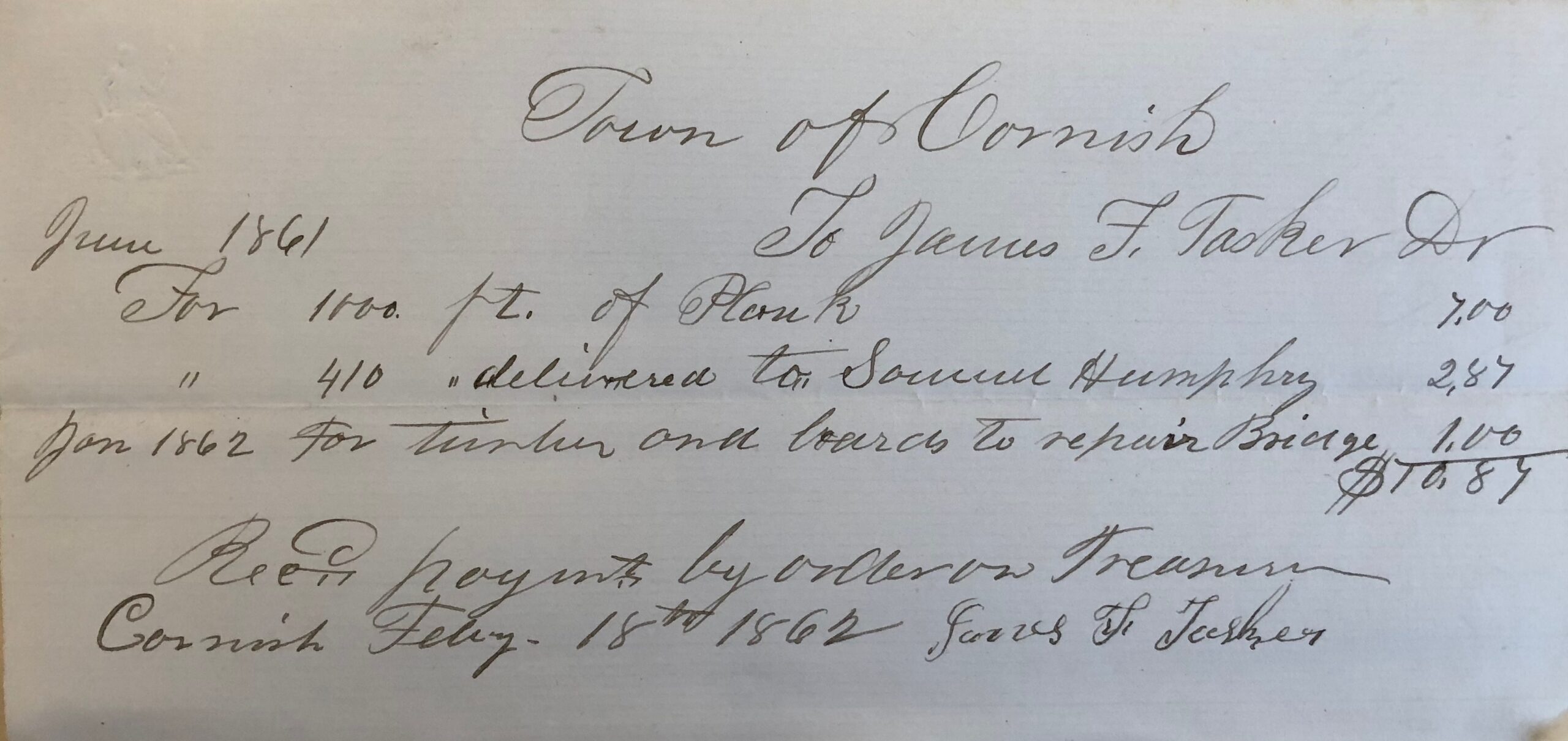
One response to “The Bridgewright James F. Tasker”
Wonderful!! Interested in booking you to speak to our group – the Bedford Historical Society. How can we do this?